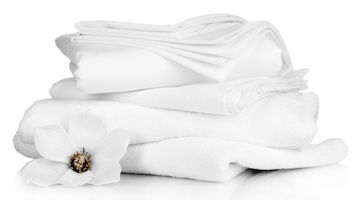
How do you make your life easier and save a few dollars in the process? You ask someone from the oily rag community of course! This week, from ideas about how to grow your fresh food from scraps to great ideas about how to keep your linen matched, they have the answers…
Lorraine from Hamilton has some great ideas about linen. “I like to buy sheets in white or cream – two colours that never date. No noticeable fading as they age, plus when the fitted sheet needs replacing (they usually go first) simply buy a new fitted sheet in the same colour. I once had a cream towel set and the hand towel had to be replaced – same principle, no ruined set!
“I recently bought a duvet cover at an Op Shop for $5 and resized it to a King size duvet cover for my bed. I shortened one side of the duvet cover. This means the bottom opening is no longer centred but it is still the same size. From the side offset I made a matching standard pillowslip.”
Lorraine has lots of other tips about bedding, which we have posted on our oily rag website.
Kay from Christchurch reduces the sour taste of rhubarb by adding half a teaspoon of baking soda to the pot while it is boiling.
ET from Canterbury has a suggestion for our Hauraki reader who is looking for a sweet alternative to sugar in jam-making for a diabetic. “They could investigate the possible use of Stevia. This is a natural product which is becoming increasingly well known. Given that diabetes is such a serious condition, check with experts before use.”
Mamioni from Whakatane has sent in an interesting cat training tip. “I had a problem with the cat jumping up on the window sills of our new house, marking the walls and leaving scratches in the paintwork. Short of murdering her, I pondered other alternatives. My first idea was to place a dozen set mouse traps along a sill, until one morning, lying in bed in that zone where solutions pop into your head, I came up with a great idea. I cut lengths of plastic conduit (plastic down pipe would also do the trick) the width of the window. The cat jumped up on one of them causing the pipe to fall and giving her a fright at the same time. She hasn’t attempted to jump up since.”
Anna has responded to the tip about spreading broken egg shells around plants to keep slugs and snails away, and suggests using pine needles to do the job instead.
Faye from Auckland says, “Instead of throwing out the root end of store-bought celery, place it in a jar of water. In no time, roots will develop and it can be planted in the garden for lots of free celery.”
As it happens, there are quite a few vegetables that can be grown from scraps – like potatoes of course. Use the peelings or chunks that have grown eyes. Make sure there are two or three eyes on each piece and plant them directly into soil with the eyes looking up. Garlic and ginger can also be planted directly into soil. Other veg off-cuts should be placed in a dish of water until roots form. Try spring onions – or even pineapple for those in the warmer areas.
Now is the time to plant citrus. A few years ago an oily rag reader planted a number of orange trees, including Navel and Valencia varieties, which are now delivering a regular supply of fruit.
What the difference between Navel and Valencia oranges you may well ask. Valencia are excellent for juicing (50% is juice), while Navel are better for eating – although both are good. Navel oranges, which are available from June through to December, are large, sweet, and seedless, while Valencia are a summer orange (November through to February) so the two varieties work well together. Harwoods Late (a Valencia) is the main commercial juicing orange in NZ.
The other interesting thing about these varieties is that the Navel has a mini orange – or ‘navel’ – inside it instead of seeds. Valencia varieties don’t have this – they have seeds. There you go, something to think about while you are munching into your oranges!
By Frank and Dr Muriel Newman. Read more here.
If you have tips or questions you would like to share with readers, then please contact us via the website at oilyrag.co.nz or by writing to Living off the Smell of an Oily Rag, PO Box 984, Whangarei.









Join the Discussion
Type out your comment here:
You must be logged in to post a comment.